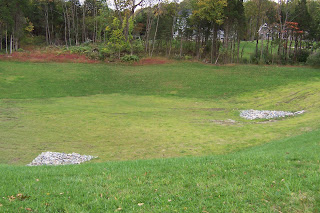Primroses = Spring
 Just when I think I can’t stand another minute of winter, the smiling faces and heady fragrance of primroses appear in stores everywhere. These came in their own cache pots, but I’ve also used the plants in small tabletop troughs, indoor window boxes, and ornamental bowls, to make attractive centerpieces.
Just when I think I can’t stand another minute of winter, the smiling faces and heady fragrance of primroses appear in stores everywhere. These came in their own cache pots, but I’ve also used the plants in small tabletop troughs, indoor window boxes, and ornamental bowls, to make attractive centerpieces.Many primroses are not scented. As with roses, I wonder, “What’s the point?” Yellow and purple primroses are the most likely to exude perfume, but not all of them do. So, I stand at the display and sniff each and every yellow plant to find out whether it’s “the one.” To me, it’s worth the effort. However, I couldn’t resist that bi-color interloper despite its lack of scent --- I figured the other two would make up for it.
Select plants that have new buds coming on, or flowers just about to open, and the plants will retain their flowers for two to three weeks with ordinary care. The trick then becomes to find a spot to hold them over until they can go into the ground.
Last year, I brought home six flowerless, wilted plants that had been potted up together. They cost $4.00. My gardener’s eye told me that they just needed water. Five of them recovered by the next day and thrived at the front edge of the bog garden all season. Normally, primroses don’t like so much sun, but in that spot, once the Ligularia leaves appear they provide just the right amount of shade. This is another one of those companion plant, right-plant-in-the-right-place things you learn by trial and success.
This year, I’ll have to find another spot for my early-spring treasures, since the bog garden is nearly full. Even though being led down the primrose path implies deception and hypocrisy, a literal primrose path doesn’t sound like such a bad idea --- as long as the primroses are fragrant.

